- europages
- >
- COMPANIES - SUPPLIERS - SERVICE PROVIDERS
- >
- cold working
Results for
Cold working - Import export
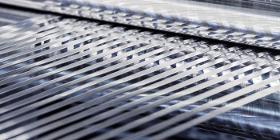
AMETEK SPECIALTY METAL PRODUCTS
United States
SS 301 is an austenitic Chromium-Nickel stainless steel capable of attaining high strength with moderate cold working. The combination of high strength and good ductility makes it suitable for numerous mechanical switches as well as surgical instruments, metal stampings and electronic and computer spring components.. The alloy is readily formed in the annealed temper. Ductility decreases with increased cold rolled strength but not to the degree that would occur with SS 302. It is not recommended for deep drawing. SS 301 can be welded by all conventional processed except oxy-acetylene. The weld should not make contact with electrolytes to prevent intergranular corrosion. SS 301 is resistant to atmospheric corrosion and is additionally resistant to mildly corrosive mediums. The combination of narrow strength bands and close thickness tolerance provided by Hamilton Precision Metals is the key to repeatable response characteristic in spring and switch applications.
Request for a quote
AMETEK SPECIALTY METAL PRODUCTS
United States
Alloy 209 is a fully austenitic nitrogen strengthened stainless steel, having twice the yield strength and superior corrosion resistance at room temperature when compared to 316/316L or 317/317L stainless steels. This grade does not become magnetic when cooled to sub-zero temperatures or to a cold working process and has high resistance to sulphide stress corrosion cracking in both annealed and cold worked/ cold worked & aged form up to 30 HRc hardness. Please note that we have a minimum order value of £10,000.
Request for a quote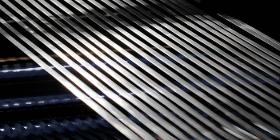
AMETEK SPECIALTY METAL PRODUCTS
United States
Ti Grade 9 is a near alpha, alpha-beta alloy, sometimes referred to as “half-6-4.” It offers 20 to 50% higher tensile strength than the commercially pure titanium at room and elevated temperatures. It is much more amenable to cold working than Ti 6AI/4V alloy and can be cold worked 75 to 85% to result in moderately high strength and good ductility The alloy can be formed from the annealed temper. Severe forming may be aided by an intermediate stress relief. Stress relieving may be appropriate after severe cold forming to remove residual stresses. Weldability and corrosion resistance is very similar to commercially pure titanium. Welding should be performed with inert gas shielded arc or spot welding.Welding with active gases, coatings, or fluxes must be avoided to prevent embrittlement.
Request for a quote
AMETEK SPECIALTY METAL PRODUCTS
United States
Welded and redrawn tube manufacturing employs elements of both the welded and seamless processes. A welded and redrawn tube is welded in a conventional manner but then transferred to our seamless mill, located in the same factory. Here the product is redrawn to achieve a welded and redrawn finish. The objective of redrawing is to achieve homogenisation of the weld following annealing by cold working. This refines the structure of the weld resulting in improvements that include: Better corrosion resistance Improved fatigue life Higher mechanical integrity Please note that we have a minimum order value of £10,000.
Request for a quote
AMETEK SPECIALTY METAL PRODUCTS
United States
21Cr-6Ni-9Mn is a high manganese nitrogen strengthened, austenitic stainless steel. It combines high strength in the annealed condition, excellent resistance to oxidation at high temperatures as well as good resistance to lead oxide and a high level of corrosion resistance at ambient temperatures. The alloy can be fabricated and formed much the same as type 304 and 316, and is readily wieldable. It remains nonmagnetic after severe cold work. Please note that we have a minimum order value of £10,000.
Request for a quoteDo you sell or make similar products?
Sign up to europages and have your products listed

AMETEK SPECIALTY METAL PRODUCTS
United States
Alloy 400 (UNS N04400) is a solid-solution Nickel/Copper alloy that can be hardened only by cold working. It has reasonable strength and toughness over a wide temperature range and excellent resistance to many corrosive environments. Alloy 400 is widely used in many fields, especially marine and chemical processing. Typical applications are valves and pumps; pump and propeller shafts; marine fixtures and fasteners; electrical and electronic components; springs; chemical processing equipment; gasoline and fresh water tanks; crude petroleum stills, process vessels and piping; boiler feedwater heaters and other heat exchangers; and deaerating heaters. Please note that we have a minimum order value of £10,000.
Request for a quote
AMETEK SPECIALTY METAL PRODUCTS
United States
AMETEK Specialty Metal Products uses a wrought powder metallurgical process to ensure the highest purity finished products. Our main strengths lie in the processing of Nickel, Iron and Cobalt containing alloys amongst other available materials. The processing of these materials begins with the consolidation of powder through a roll compaction process and followed by a controlled atmosphere sintering. Further reduction of the material is performed solely under cold working temperatures to reduce the introduction of non-metallics and annealing is performed under controlled atmospheres. AMETEK Strip Products are produced in ranges between .002” (0.05mm) and .080” (2.03mm) thicknesses in a full range of tempers and widths to 22” (558.8mm) while maintaining special capabilities to produce materials outside of these ranges for special applications. This process lends itself to the production of small but easily reproducible lots of highly specialized alloys
Request for a quote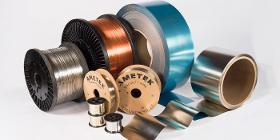
AMETEK SPECIALTY METAL PRODUCTS
United States
L-605™ is a nonmagnetic cobalt-based chromium-tungstennickel alloy that has excellent corrosion and oxidation resistance, and high strength at both room and elevated temperatures. Through work hardening, high strength levels can be obtained. L-605™ has a minimal heat treatment response, but can be used in the cold worked and aged condition. Applications include medical implant devices, springs, valves, and engine components for the aerospace industry. As a result of its high tungsten content, L-605TM is radiopaque, which is beneficial for implant medical devices, such as stents. Because of the alloy’s high work hardening rate, only minimal reductions can be taken before solution annealing will be required. L-605TM is very resistant to oxidation and scaling at elevated temperatures, and is nonmagnetic in all conditions. L-605™ is produced by vacuum induction melting followed by electroslag remelting (VIM-ESR), and as such, has a low nonmetallic inclusion level.
Request for a quote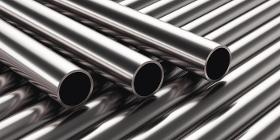
AMETEK SPECIALTY METAL PRODUCTS
United States
Ti 6Al/4V (Titanium Grade 5) is the most widely used of all the alpha-beta titanium alloys accounting for more than 50% of total titanium usuage. It is typically used in the annealed condition, at service temperatures through 400°C (750°F). Ti 6Al/4V is welded with matching or with ELI filler wire. Ti 6Al/4V is significantly stronger than commercially pure titanium while having the same stiffness and thermal properties excluding thermal conductivity, which is about 60% lower in Grade 5 Ti than in CP Ti. Amongst its many advantages, it is heat treatable. This grade is an excellent combination of strength, corrosion resistance, weld and fabricability. In consequence, its uses are numerous such as for military aircraft or turbines. It is also used in surgical implants. Generally, it is used in applications up to 400°C to improve ductility and toughness in cold-worked condition. Please note that we have a minimum order value of £10,000.
Request for a quote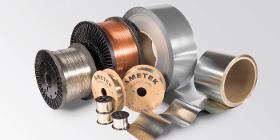
AMETEK SPECIALTY METAL PRODUCTS
United States
HPM® 625 is a nickel-chromium-molybdenum alloy with niobium which is well suited for a wide range of severe corrosive environments. The alloy composition provides a product which performs well at elevated temperatures up to 1800°F. The strength can be increased by cold working. The alloy is readily formed in the annealed temper, and can be joined by the standard welding and brazing processes. Available Sizes: HPM® 625 is available from Hamilton Precision Metals as strip product in thicknesses from 0.001” to 0.025” (0.0254 mm to 0.635 mm) in widths up to 12.0” (304.8 mm). The material conforms to ASTM B443, AMS 5599 and UNS N06625.** **Hamilton Precision Metals can also supply product to AMS 5879 (UNS N06626) for demanding fatigue applications, which incorporates double melting, and restrictive limits for Carbon and Nitrogen.
Request for a quote
AMETEK SPECIALTY METAL PRODUCTS
United States
Havar® is a heat treatable Cobalt base alloy that provides very high strength. The alloy has excellent corrosion resistance and is non-magnetic. Applications have included metal diaphragms for aerospace sensors, metal diaphragms for burst discs, power springs, gap spacers in magnetic heads, and target foils in nuclear physics. Forming cold rolled Havar requires large radius (90° Bend – 8 X thickness) prior to age hardening. The joining can be accomplished using both welding and soldering techniques.The ultimate endurance life is achieved by heat treating the alloy at 1000°F after 80% cold work. The alloy will retain 75% of room temperature strength up to 950°F (Figure 1). Available Sizes: Havar® is available from Hamilton Precision Metals as strip product in thicknesses from 0.0005” to 0.025” (0.0127 mm to 0.635 mm) and widths to 7.5” (190.5 mm). A foil product is available in thicknesses down to 0.000060” and widths of 4.0” (101.6 mm). The material corresponds to UNS R30004.
Request for a quote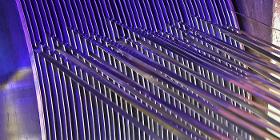
AMETEK SPECIALTY METAL PRODUCTS
United States
HPM® 455 is a precipitation heat treatable martensitic Stainless Steel. The composition provides a good combination of corrosion resistance and heat treated strength favorable for fatigue applications. The material is well suited for demanding spring devices The alloy has reasonably good forming characteristics in the annealed temper considering that it has a hardness of RC30. A significant radius is useful when bending is necessary in a fabrication. Cold working prior to the precipitation hardening treatment can drive finish strength up to 270,000 PSI (0.2% offset yield strength). The alloy retains a good strength through 800°F (Approx. 70% of room temperature). Resistance to stress – corrosion cracking is optimized by heat treating at 950°F. The overall corrosion resistant to normal atmospheric is equal to SS 430 with no staining. The alloy can be welded by resistance and inert gas shielded techniques. It also is suitable for brazing using a flux when possible.
Request for a quote
AMETEK SPECIALTY METAL PRODUCTS
United States
S20910 stainless steel provides a combination of good corrosion resistance and strength not found in any other commercial material available in its price range. This austenitic stainless steel has corrosion resistance greater than that provided by types 316 and 316L, plus approximately twice the yield strength at room temperature in the annealed condition. In addition S20910 stainless steel has very good mechanical properties at both elevated and sub-zero temperatures a well as outstanding cryogenic properties. And, unlike many austenitic stainless steels, 22-13-5 stainless steel can be heavily cold worked to enhance its yield strength and remain non-magnetic. Please note that we have a minimum order value of £10,000.
Request for a quote
AMETEK SPECIALTY METAL PRODUCTS
United States
HPM® 600 is well suited for severe corrosive environments and is oxidation resistant through 2150°F. Such as, metal diaphragms for aerospace sensors, flexible metal foil heaters and metal diaphragms for burst discs. The strength can be increased by cold working. The material has good elevated strength retention through 800°F. The alloy is readily formed in the annealed temper, and can be joined by the standard welding, brazing and soldering processes. Available Sizes: HPM® 600 is available from Hamilton Precision Metals as strip product in thicknesses from 0.0005” to 0.050” (0.0127 mm to 1.27 mm) and width up to 12” (304.8 mm). It is also available in foil as thin as 0.000100” (0.00254 mm) in widths of 4.0” (101.6 mm) maximum. The material conforms to ASTM B168, AMS 5540, MIL N 23228 and UNS N06600.
Request for a quote
AMETEK SPECIALTY METAL PRODUCTS
United States
Our ability to strategically blend alloys allows us to offer specifically blended materials such as highly alloyed Nickel-Tungsten strip (NiW) for superconducting substrates. These custom alloys are available at customer-specified chemistries and cold work. The use of Tungsten in these alloys produces a flexible strip with preferred magnetic characteristics for superconducting wire. High Temperature Superconductors Our Nickel Tungsten substrate material is used in high temperature superconductors (HTS) to carry high-density electrical currents with very little energy dissipation. This property makes high temperature superconducting wire suitable for sectors such as power generation and transmission, electric motors, and high magnetic field generation. Nickel and nickel alloys are used as substrate materials because they are flexible to the thermomechanical processing of the wire making process.
Request for a quoteResults for
Cold working - Import exportNumber of results
16 ProductsCountries
Company type